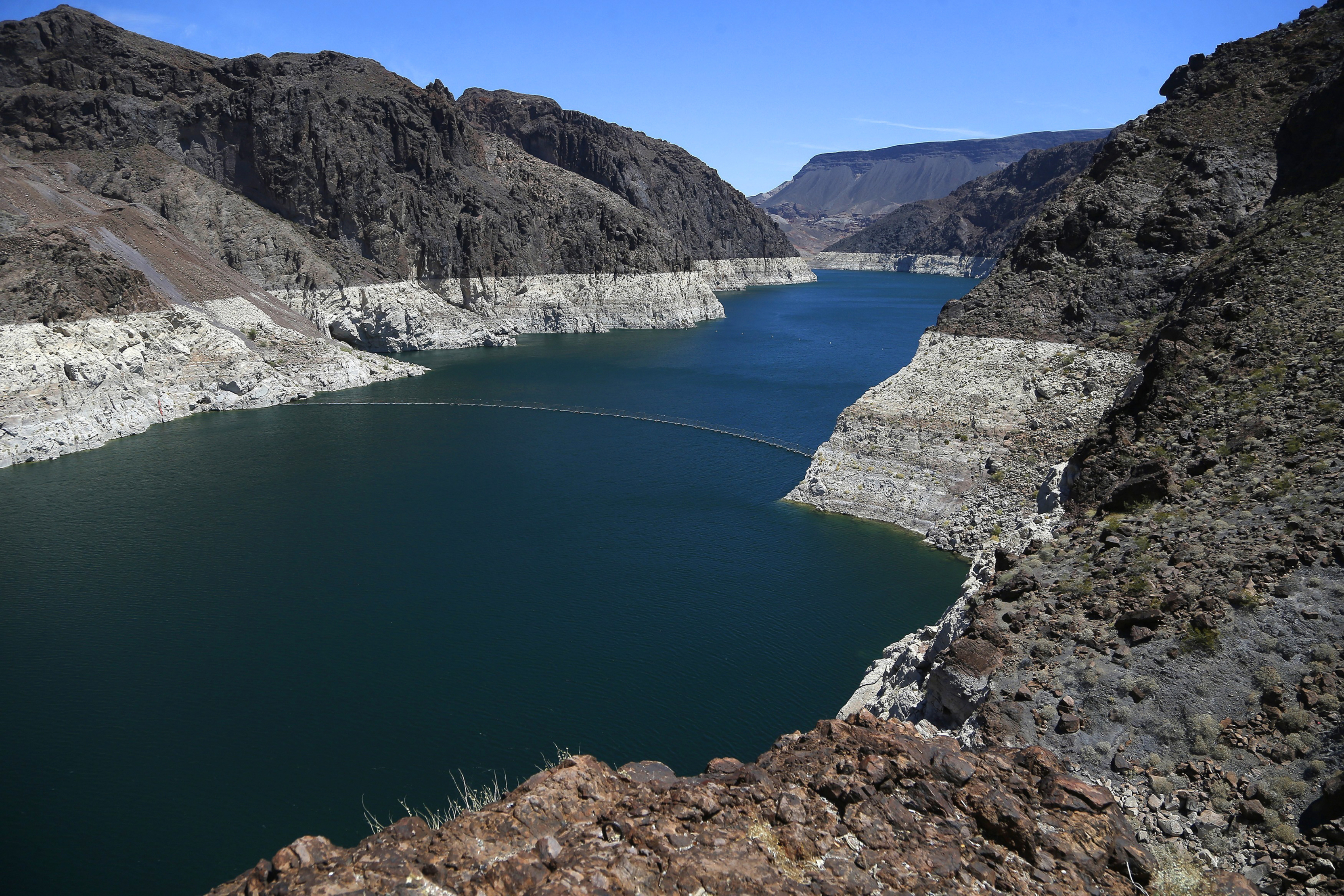
6 states backed Colorado River plan; Arizona faces deadline
FLAGSTAFF, Ariz. (AP) — Arizona is facing a deadline to become the last of several states in the U.S. West to approve a plan ensuring shared water from the Colorado River doesn’t dry up for millions of farmers, cities, tribes and developers that depend on it.
The other six states have agreed to plans that recognize a long-running drought, the dwindling supply of water and how they intend to cope with it. Arizona’s plan has broad support but hasn’t been approved by the Legislature, a factor that has made the negotiations on the drought contingency plan more complex. No other state required lawmakers to sign off.
The U.S. Bureau of Reclamation expects an agreement from all seven states Thursday. If the deadline isn’t met, the agency will ask the states to weigh in on how the overtaxed river water should be allocated ahead of a projected shortage in August. Without a consensus plan, the federal agency has said it will make the rules.
“To date, Interior is very supportive and extremely patient with the pace of progress” of the drought contingency plan, the agency said in a statement. “The delay increases the risk for us all.”
The deadline requires only that the states sign off on the drought plan for the river that serves 40 million people in Wyoming, Colorado, Utah, New Mexico, Arizona, Nevada and California. There is no legal requirement to figure out exactly how states will live up to the reductions outlined.
Under existing guidelines, Arizona would be first hit and hardest if Lake Mead, on the state’s border with Nevada, falls below 1,075 feet (328 meters). That’s because Arizona has the lowest priority rights to the river. If the drought plan is approved, cuts would be spread more widely and eventually loop in California. Mexico also has agreed to cutbacks.
Arizona lawmakers want to see how the plan will affect their constituents before they vote, and tweaks to a handful of measures that are expected to be introduced will create more uncertainty. The Gila River Indian Community, for example, said it would pull support for the drought plan if other legislation attacks its water rights gained in a federal settlement.
“I want to be absolutely certain that we look at this from every angle,” said Republican state Sen. Sine Kerr, who owns a large dairy farm. “My greatest fear in any legislation, but in something this critical, are those unintended consequences. Did we think of everything?”
Arizona Gov. Doug Ducey has made the plan a top priority, with his budget including $30 million to protect the levels in Lake Mead and $5 million for groundwater infrastructure.
“As a state, there will be a cloud of uncertainty over our water future” without the drought contingency plan, said Warren Tenney, executive director of the Arizona Municipal Water Users Association. “We view the Jan. 31 deadline as a very real deadline.”
Colorado, Wyoming, Utah and New Mexico had their plans done in December. If Arizona’s proposal collapses and the federal government steps in, those states could put some of their plans in motion to meet their obligation to other states, water managers said. That includes sending water from reservoirs upstream of Lake Powell on the Arizona-Utah line to keep it from dropping so low that water could not be delivered to Lake Mead.
“In terms of signing ink on documents, we have been really waiting to have a seven-state package that has seven state flags on top of a cover letter,” said James Eklund, Colorado’s representative on the Upper Colorado River Commission.
U.S. Bureau of Reclamation Commissioner Brenda Burman has said she’s facing pressure from other states to limit Arizona’s water deliveries without a complete drought plan. She’s also predicted lawsuits.
Arizona lawmakers say they don’t want to be rushed. Legislation allowing the Arizona Department of Water Resources to sign off on the state plan has been introduced. A handful of other measures that deal with money for conservation and other issues have not, and all need to pass for the drought plan to move forward.
“We’ve got to do that quickly,” said Sen. David Bradley of Tucson, the top Democrat in the Senate. “The less time you give us, the more complicated this is going to get.”
Arizona must find a way to reduce its use of Colorado River water by up to 700,000 acre-feet — more than twice Nevada’s yearly allocation under the drought plan. An acre-foot is enough for one to two households a year.
In California, the Metropolitan Water District, a major user of Colorado River water, is pumping more to ensure the 500,000 acre-feet of water it has stored behind Lake Mead won’t be stranded if the reservoir levels fall drastically and Arizona isn’t on board with the plan, district general manager Jeff Kightlinger said.
“At the end of the day, Arizona needs this deal more than anybody, and they know it,” Kightlinger said. “California is stepping up to the plate here. We actually have the senior right to the river. Some people in California are saying, ‘Why should we give anything?'”
___
Associated Press writers Jonathan J. Cooper in Phoenix and Dan Elliott in Denver contributed to this report.
The Western Journal has not reviewed this Associated Press story prior to publication. Therefore, it may contain editorial bias or may in some other way not meet our normal editorial standards. It is provided to our readers as a service from The Western Journal.
Truth and Accuracy
We are committed to truth and accuracy in all of our journalism. Read our editorial standards.
Advertise with The Western Journal and reach millions of highly engaged readers, while supporting our work. Advertise Today.












